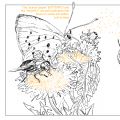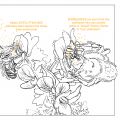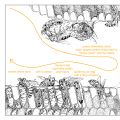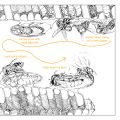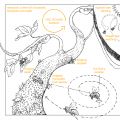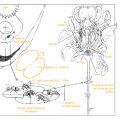🐝 Bee series: On the bee and its relationship with other pollinators: Difference between revisions
(Created page with "thumb|Thumbnailed image]|The Alfala leafcutting bee The “Alfala leafcutting bee” is known for her privileged relationship wit...") |
|||
| Line 19: | Line 19: | ||
== Related images == | == Related images == | ||
<gallery mode="traditional" | <gallery mode="traditional"> | ||
Pollinators-bees-composition-1b.jpg| | Pollinators-bees-composition-1b.jpg| | ||
Pollinators-bees-composition-1a.jpg| | |||
Pollinators-bees-composition-2b.jpg| | |||
Pollinators-bees-composition-2a.jpg| | Pollinators-bees-composition-2a.jpg| | ||
Pollinators-bees-composition- | Pollinators-bees-composition-3b.jpg| | ||
Pollinators-bees-composition-3a.jpg| | Pollinators-bees-composition-3a.jpg| | ||
</gallery> | </gallery> | ||
Latest revision as of 10:46, 30 November 2021
The “Alfala leafcutting bee” is known for her privileged relationship with the alfala flower. The fertilizing organ of these flowers is hidden behind a petal, and only pops up when touched by an insect. Each time they access the nectar and pollen of the alfala, leafcutting bees take a “punch” in the face. This solitary bee pollinates plant species that honey bees would avoid because of this quite unwelcoming “punch”. Bumblebees are one of the few pollinators who can access closed stamens (the fertilizing organ), inside which pollen grains are sealed. They access it by buzzing: their very own buzz frequency then releases the pollen grains. Called “buzz pollination”, this feature allows plants to “choose” the species who will pollinate them, thus increasing the chance they will visit the same plant species gain, and fertilize them with the pollen they are covered with.
Pollinators are facing a crisis caused by several problems:
Today, there is no longer a great diversity of habitats because of the artificialization of the environment, which also means very little diversity of flowers. The decline of biodiversity leaves us with large plains covered with one single type of flower or plant. Therefore, instead of having a diversified and constant diet, pollinators are left with an unstable source of feed and no nutritional balance.
Pesticides can have an impact on the ability pollinators have to locate themselves in the environment. Knowing that a small bee can pollinate as far as 10km away from her hive, she also needs to be able to remember her environment to come back. If her memory is disturbed, the bee can simply get lost and die.
In beekeeping today, thinking that local bees make the most sense for their environment is wrong. Globalization subjects local bees to problems they do not know how to handle.
Example: the Varroa, which is a kind of mite that sucks the blood out of bees. Not to mention Asian hornets who stand in front of the hives and scare bees to death.
To know more on the topic:
- 📄 “Spore & Pollen“, our research project focusing on the bee and the impact of climate change on pollinators
- 🔊 “An open-source bee for a poisonous environment” (with beekeeper and biologist Julien Perrin) — Podcast (~35min) 🇬🇧🇫🇷
- 🔊 Umwelt of the bee

